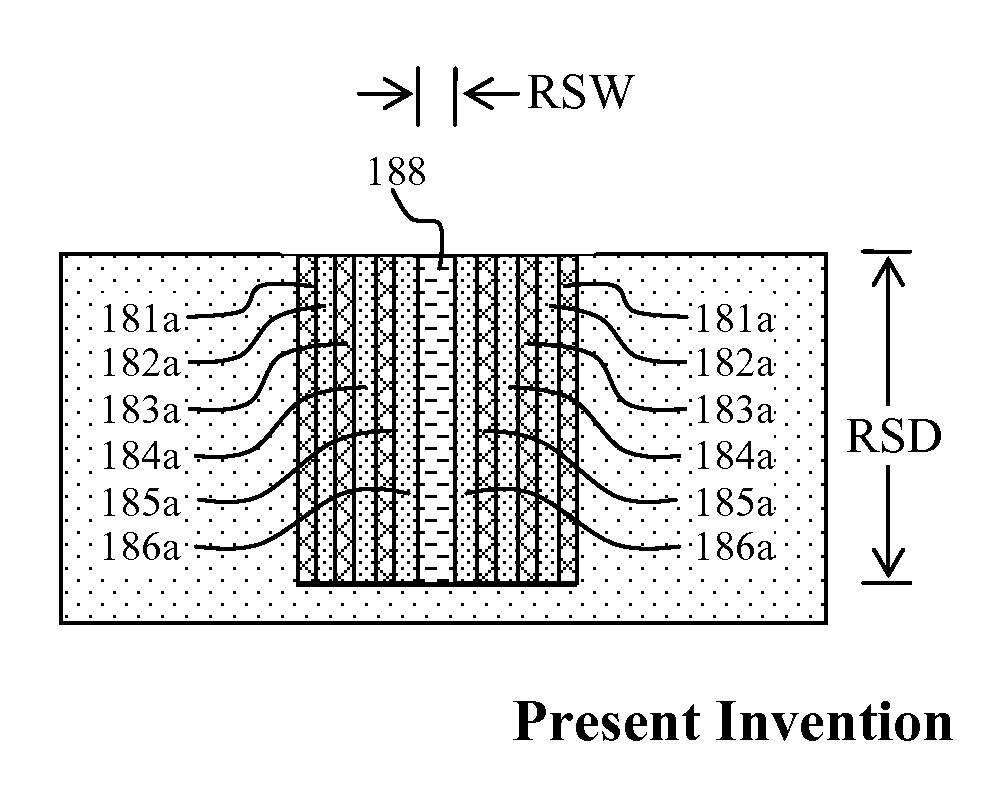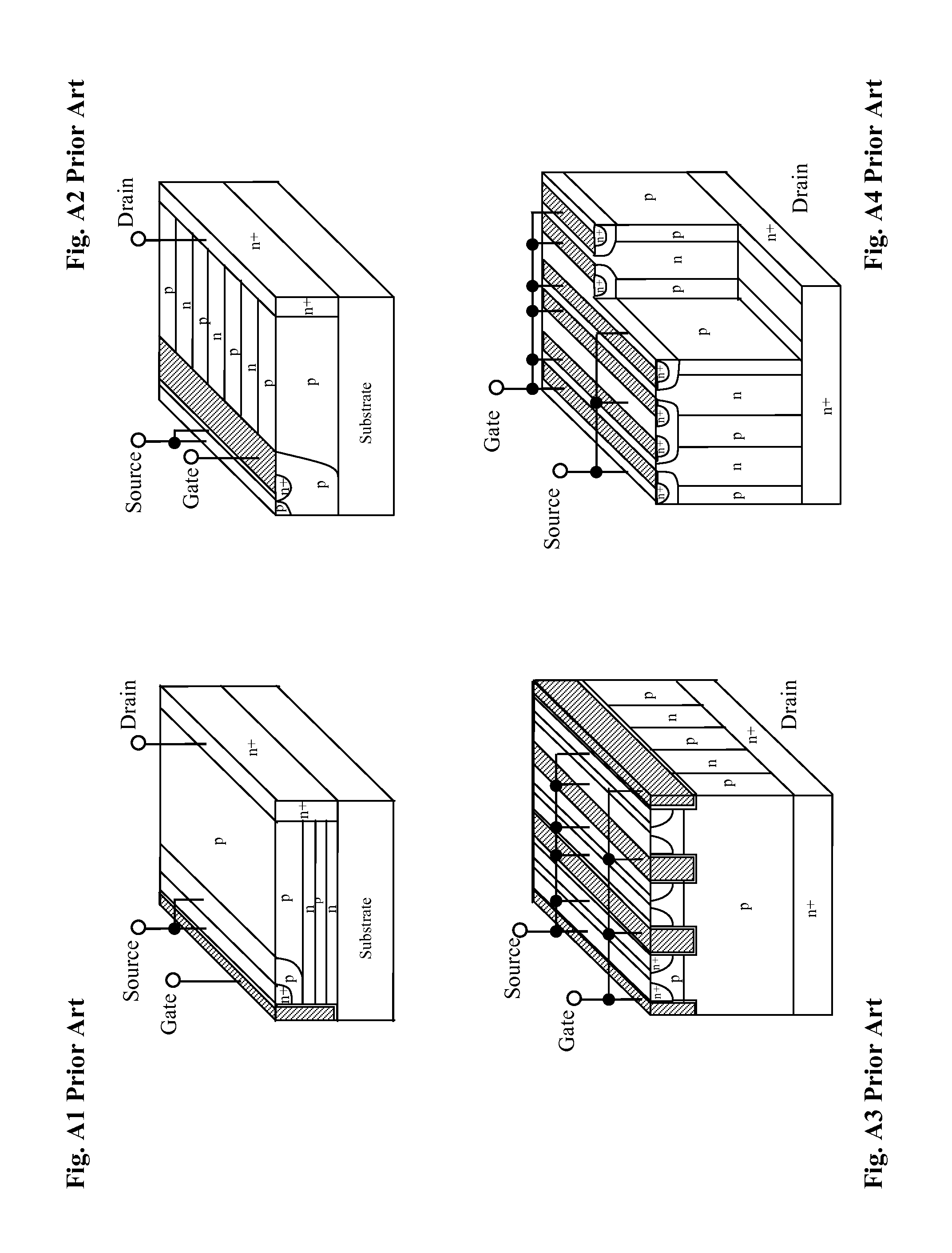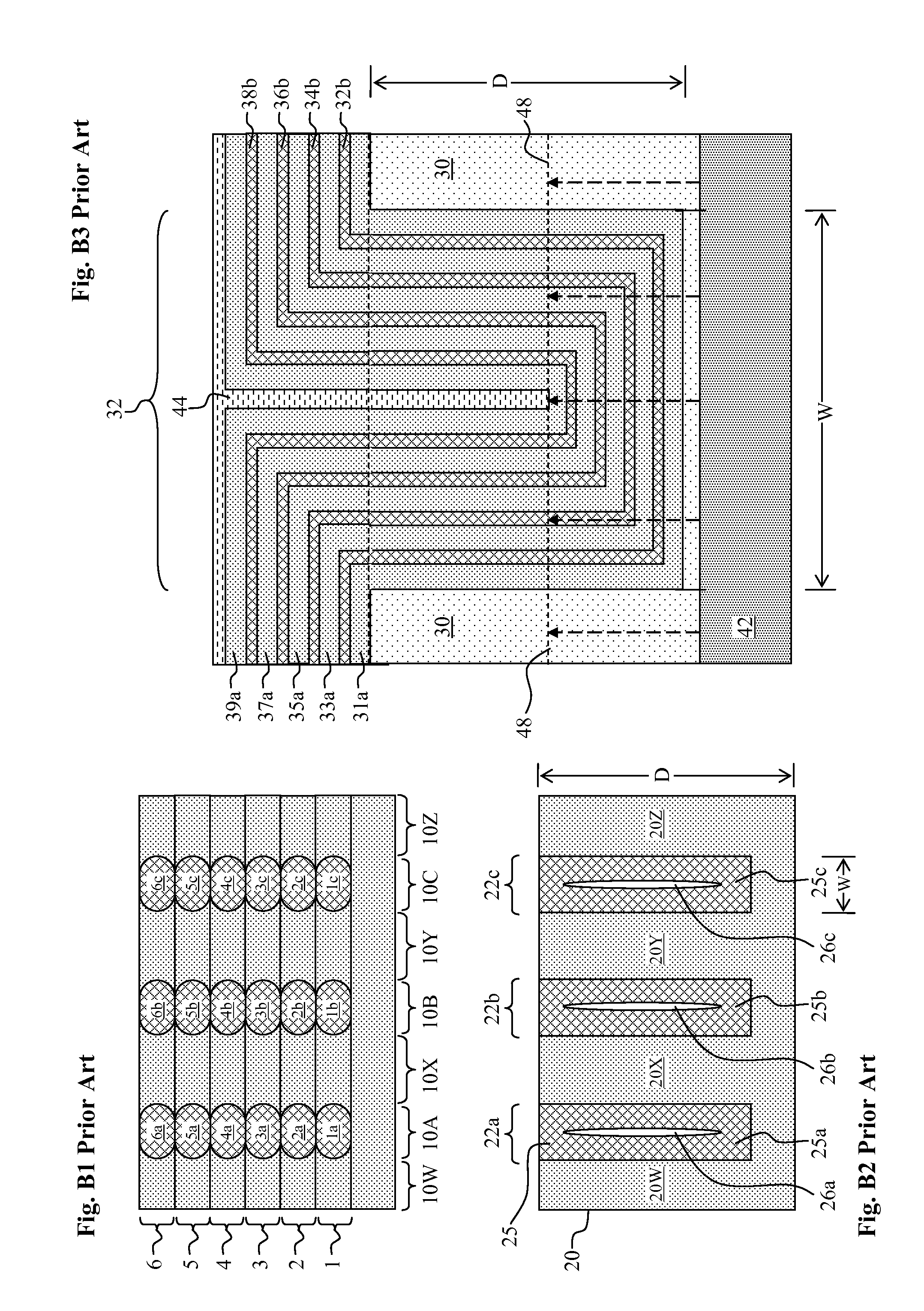Method for making a charge balanced multi-nano shell drift region for superjunction semiconductor device
- Summary
- Abstract
- Description
- Claims
- Application Information
AI Technical Summary
Benefits of technology
Problems solved by technology
Method used
Image
Examples
first embodiment
[0048]FIG. 2A through FIG. 2G illustrate a first embodiment method of making the MNSDR under the present invention. In FIG. 2A a BDL 156 is formed. In one embodiment, the BDL 156 may be formed atop a base substrate (not shown here to avoid unnecessary obscuring details). In another alternative embodiment, a buffer layer may be formed between the BDL and the base substrate. As an example, the BDL 156 can be formed by epitaxially growing the BDL 156 with doping parameters known in the art and corresponding to a desired conductivity type and dopant concentration. As a more specific example, the BDL 156 can be formed with a very low N− dopant volumetric concentration in the range of from about 1E14-cm-3 to about 1E16-cm-3. A cavity hard mask 158 is then applied atop the BDL 156 and opened with a mask window 158a of pre-determined shape and size CVS. The BDL 156 is then anisotropically etched through the mask window 158a to create a substantially vertical cavity 162 with a depth NSHT. As...
second embodiment
[0051]FIG. 3A through FIG. 3G illustrate a second embodiment method of making the MNSDR under the present invention similar to the method illustrated in FIG. 2A through FIG. 2G. However in FIG. 3A through FIG. 3G, a hard mask is not used during the growing of the NSM's. In FIG. 3A a BDL 156 is formed atop a base substrate (not shown here to avoid unnecessary obscuring details). The BDL 156 can be formed by epitaxially growing the BDL 156 with doping parameters known in the art and corresponding to a desired conductivity type and dopant concentration. A cavity mask 158 is then applied atop the BDL 156 and opened with a mask window 158a of pre-determined shape and size CVS. The BDL 156 is then anisotropically etched through the mask window 158a to create a substantially vertical cavity 162 with a depth NSHT. As pointed out before, in practice, the “substantially vertical” walls of the vertical cavity 162 has a taper of around five (5) degrees from the vertical. The windowed cavity mas...
PUM
 Login to View More
Login to View More Abstract
Description
Claims
Application Information
 Login to View More
Login to View More - R&D
- Intellectual Property
- Life Sciences
- Materials
- Tech Scout
- Unparalleled Data Quality
- Higher Quality Content
- 60% Fewer Hallucinations
Browse by: Latest US Patents, China's latest patents, Technical Efficacy Thesaurus, Application Domain, Technology Topic, Popular Technical Reports.
© 2025 PatSnap. All rights reserved.Legal|Privacy policy|Modern Slavery Act Transparency Statement|Sitemap|About US| Contact US: help@patsnap.com



